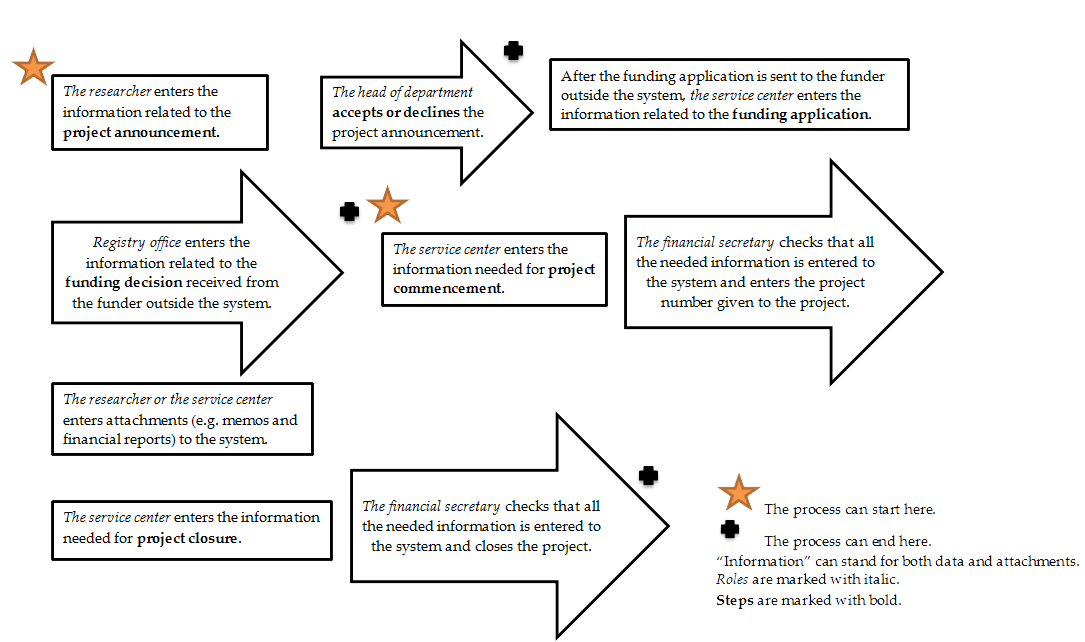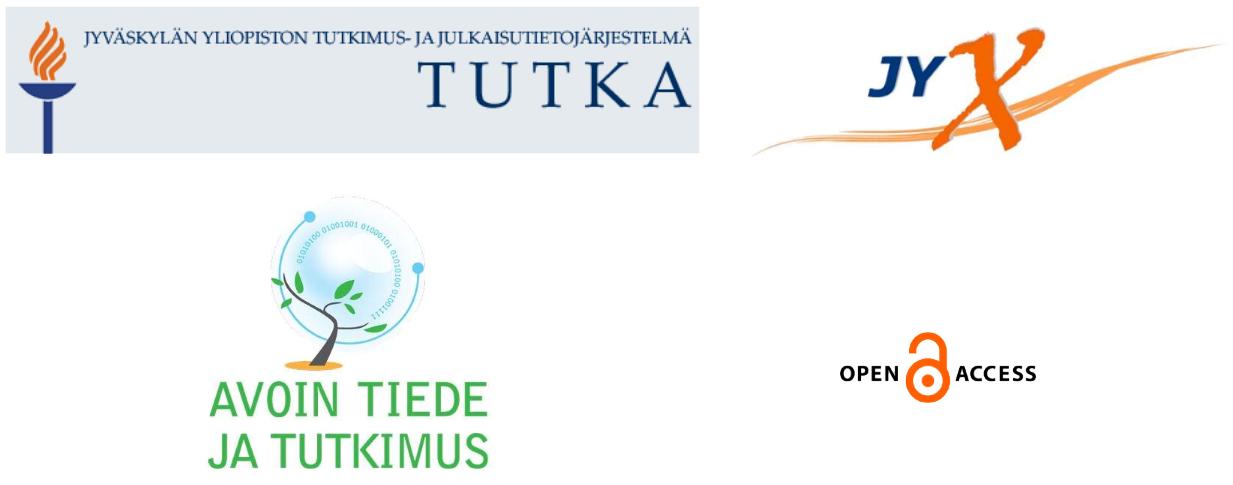TUTKA development and renewing the research information system
Status report
Miika Nurminen
IT Services
IT Services
On CRIS renewal project
- Tendering is on the way. Three potential suppliers were chosen for negotiations: Cineca (IRIS - e.g. HKU), Elsevier (PURE - e.g. StAndrews, HY), Thomson-Reuters (Converis - e.g. KTH, Mittuniversitetet).
- Steering group has prepared tendering documnts in collaboration with different units and based on new information from the negotiations (e.g. checked feasibility of obligatory requirements). Final call for tenders will be released during spring.
- TUTKAa will be used in its current form in 2015
- ...and even after that for most data sections (decisions on recoding data in sections not included in new research information system have not been made yet).
- Transition to the new system can be carried out in stages.
- Projects ("larger projects"-section), invited presentations and guidances outside JyU (if not done under JyU affiliation) are no longer considered as university-level mandatory recorded data - unless there is a department-specific policy (NB. international talks are still accounted for in YPJ report).
Planned reforms
- Centralized recording will be utilized in the new CRIS.
- Data entered in selected sections (publications, projects with additional funding, international mobility (staff), essential scientific prizes.
- Centralized recording of publications has been already implemented in TUTKA on 2014.
- In the new system recording mobility data will be centralized as well.
- The most essential process change: renewing the project process.
- Researchers will submit project announcement to the system for acceptance always before submitting funding application.
- Information in project announcement will be used as a base for continously updated project records (e.g. financial secretary and service centers will update the data after the researcher has submitter project announcement), usable for all persons related to the project.
- CRIS will include a collection of projct-related documents that need to be preserved according to the records management plan (registry office will archive specified documents to Dynasty as well).
- Project data will be recorded in "SAP-compatible" form. This facilicates comparing financial transactions (using reports from the data warehouse - no direct SAP-interface) to applied/received funding (=marked in CRIS).
New project process (draft)

Picture: Jenni Kokko
TUTKA development 2014-2015
- Centralized recording of publications.
- Publication recording was successfully transferred to the Library 1 Apr 2014.
- Generalized acceptance process: it is possible to record publications that fall outside the national reporting criteria.
- New publication form and tutka-publications support address to notify the Library about the publications.
- Publication records can be augmented with a Tracker link and acceptance rationale.
- Development to search functions and reports.
- New reports to list department's publications and to estimate Jufo-points affecting the funding model.
- Quick search page for departmental main users: http://tutka.jyu.fi/tutka/raportit/julkaisut_laitosraportit/.
- Improvements to JYKDOK transfers (e.g. taking affiliation information into account).
- Precondition for transferring publication data from ARTO (see Jarmo Saarti's presentation about the data collection process).
- Validated and corrected user data (fields: JyU username, email, title) based on active authentication and staff LDAP directories.
- Enables logging in using JyU credentials after IDM deployment.
- Automatic updating of Jufo publication channel data (weekly).
Recent news:
- Changes to recorded publications (Translated versions will be available in Ministry's data collection manuals).
- D4 reports are now recorded as monographs (fixed retroactively in 2014 publications).
- C2 edited books will now we included in reportable publications even without extensive introduction (NB. peer review). New classes for other edited books: D6 & E3.
- A publication can be included to classes A-C only if it has (depending on exact class) ISBN or ISSN number; otherwise D/E classes will be used. It is yet uncertain how electronic publications without ISBN/ISSN-numbers are affected.
- New Jufo channel classification and guidelines how these are used in funding model (see TSV's instructions and presentation by Janne Pölönen in publication data collection seminar).
- Jufo level of reported publications can change retroactively after the publication year (until the end of the active classification period).
- ...and even between classification periods, if the Jufo-channel has not been determined yet (=e.g. late publications of 2014).
- TUTKA contains only estimate of the Jufo level for the publication year (confirmed after reporting).
- The significance of Open Science (=publictions, data, methods - ATT)!
- Rector's decicion: Obligation for parallel publishing starting from 1 Jan 2015.
- Collaboration: Library's new parallel publishing project and Development of IT infrastructure for research.
Thank you!
